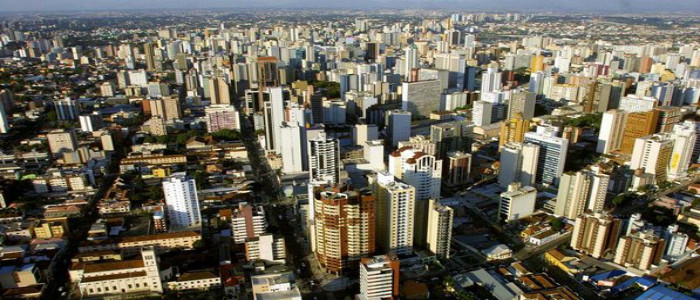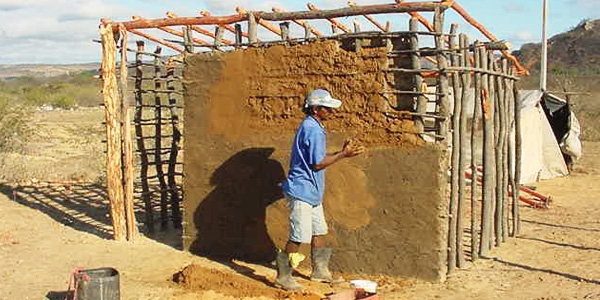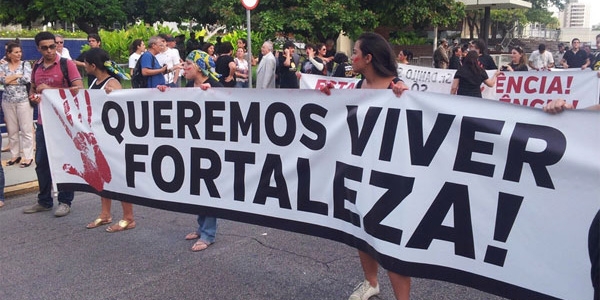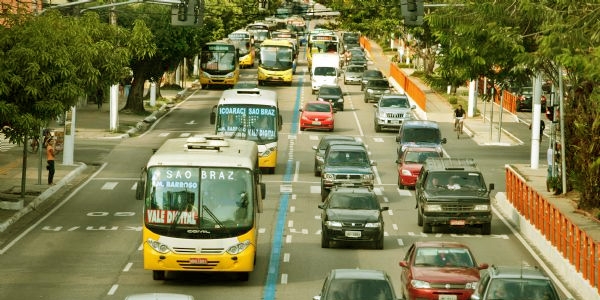The INCT Observatório das Metrópoles releases the e-book Curitiba: transformations in the urban order that analyzes the main changes, permanences, challenges and perspectives encountered in the Metropolitan Region of Curitiba (MRC) in the last two decades.
According to its organizers, Olga Firkowiski and Rosa Moura, the metropolis of Curitiba lived processes of peripherization and socio-spatial segregation in the period 1990-2010, in addition to the absence of a metropolitan management. As regards changes, new economic and social arrangements, and intensification in pendulum mobility are some of the highlights here.
The book analyzes the transformations in the metropolitan dynamics, whether those of intrametropolitan nature or those which nurture the relationships of this metropolitan region with the Brazilian urban network, seeking to observe the changes in the spatial configuration of the metropolis and its trends in the light of the conceptual basis regarding contemporary metropolises.
With 14 chapters, the book is structured in three parts: the process of metropolization; the socio-spatial dimension of exclusion/integration at the MRC; urban governance, citizenship and management of the metropolitan region.

Informal urbanization and housing.
We note a trend of an urbanization extension towards the peripheral areas in the surrounding municipalities of the center, away from services and infrastructure, and characterized by greater socio-spatial homogeneity. At the same time, the presence of informal housing spaces in Curitiba is intensified, particularly by densification of the more consolidated favelas, whose densification in recent decades evidenced the formation of a more heterogeneous and fragmented socio-spatial structure that is more complex when compared to the period before the 1990s.
Slumization and peripherization.
Though the informal spaces of housing, mostly the favelas, are still marked by precariousness of housing and settlement, when we analyze the different socio-spatial types and their locations, a major differentiation can be noted regarding the socio-economic profiles of their residents: the residents with the highest income are living in close proximity to the central portion of the metropolitan agglomeration, in clandestine development areas, and those with the lowest income are living in the favelas and more remote areas. This feature can also be considered permanence as it shows the continuous peripherization of the poorest portion of the population, whether it is living in formal or informal areas.
Urban mobility and transport network.
Transport transformations are precariously contemplating the population demands generated by increased mobility. In the period 2000-2012 those transformations point to a growth of 20.17% in the average of passengers carried on working days, accompanied by the growth of 11.75% in the bus fleets, and of 6.93% in the integrated transport network (ITN) lines. However, the growth of the ITN supply and service takes place with partiality and inadequacy of integration since there is no relationship between the growth in the amount of passengers, which is quite restricted, and the high growth in the population performing pendulum movement. This behavior calls into question the positive reputation of the urban transport system of Curitiba and mainly the ITN reputation, indicating possible restrained demand. This becomes clear in the increased fleet of vehicles in the same period that shows a growth rate of 5.47% per year in the vehicle fleet of Curitiba.
Educational conditions and social conditions.
There is a significant correlation between the performance at Brazil Test (Prova Brazil) and housing conditions and socio-spatial typology. In the middle type and in the worker popular type is concentrated the highest percentage of students with unsatisfactory performance, making it clear that differentiation and segmentation are striking features in relation to educational opportunities at the MRC and in Curitiba, and indicating the unequal distribution of educational opportunities in the territory.
MCMV Program.
My House My Life (Minha Casa Minha Vida – MCMV) program points out that the joint action of these agents at the MRC is far from reducing inequalities in the access to housing. The major offers of the MCMV-Curitiba (66.56%) and of the MCMV-São José dos Pinhais (18.50%) do not correspond to municipalities with the highest relative housing deficit – Fazenda Rio Grande, Araucária (10%), Colombo and Almirante Tamandaré (9%). Financing also does not correspond to the lower income segment, given that in the region there is a concentration of enterprises in the income range of 3 to 6 minimum wages (MWs) (45%), and the participation in the range of 6 to 10 MWs range is larger than the participation initially proposed by the Program.
Access the following link to download the book “Curitiba: transformations in the urban order”: PDF Archive
O INCT Observatório das Metrópoles lança o e-book “Curitiba: transformações na ordem urbana” que analisa as principais mudanças e permanências, desafios e perspectivas verificadas na Região Metropolitana de Curitiba nas duas últimas décadas.
Segundo as organizadoras do livro Olga Firkowiski e Rosa Moura, a metrópole de Curitiba viveu, no período 1990-2010, processos de periferização e segregação socioespacial, além da inexistência de uma gestão metropolitana. Já em relação às mudanças, destaque para novos arranjos econômicos e sociais, e intensificação da mobilidade pendular.
“Curitiba: transformações na ordem urbana” retrata as principais mudanças e permanências, desafios e perspectivas verificadas na Região Metropolitana de Curitiba nas duas últimas décadas. Para tanto, analisa as transformações nas dinâmicas metropolitanas, quer as de natureza intrametropolitanas, quer as que alimentam as relações desta região metropolitana com a rede urbana brasileira, procurando observar as transformações na configuração espacial da metrópole e suas tendências, à luz da base conceitual sobre a metrópole contemporânea.
O livro, com 14 capítulos, está estruturado em três partes: o processo de metropolização; a dimensão socioespacial da exclusão/integração na RM de Curitiba; governança urbana, cidadania e gestão da região metropolitana.

A seguir alguns eixos de análise do livro sobre as permanências e mudanças na RM de Curitiba.
Urbanização e moradias informais
Observa-se a tendência de extensão da urbanização em direção às áreas mais periféricas, em municípios do entorno ao polo, distantes dos serviços e infraestrutura, caracterizadas por maior homogeneidade socioespacial. Ao mesmo tempo, intensifica-se a presença dos espaços informais de moradia em Curitiba, em especial pelo adensamento das favelas mais consolidadas, cuja densificação nas últimas décadas revelou a formação de uma estrutura socioespacial mais heterogênea e fragmentada, mais complexa em relação ao período que antecede a década de 1990.
Favelização e periferização
Embora os espaços informais de moradia, em especial as favelas, continuem sendo marcados pela precariedade da habitação e do assentamento, analisando-se as distintas tipologias socio-espaciais e suas localizações observa-se maior diferenciação dos perfis socioeconômicos dos seus residentes, com os de maior renda vivendo nas proximidades da porção central da aglomeração metropolitana, em loteamentos clandestinos, e os de renda mais baixa nas favelas e áreas mais distantes. Essa característica pode também ser considerada uma permanência, pois aponta a contínua periferização da parcela mais pobre da população, esteja ela morando em áreas formais ou informais.
Mobilidade Urbana e Rede de Transportes
Contemplando precariamente as demandas acentuadas pela elevação da mobilidade, as transformações do transporte apontam, entre os anos de 2000 e 2012, um crescimento de 20,17% na média de passageiros transportados nos dias úteis, acompanhado do crescimento de 11,75% da frota e de 6,93% das linhas da rede integrada de transporte (RIT). No entanto, o crescimento da oferta e do atendimento da RIT se realiza com parcialidade e inadequação da integração, pois não há relação entre o crescimento de passageiros, bastante restrito, e o elevado crescimento da população que realiza movimento pendular. Esse comportamento põe em xeque a reputação positiva do transporte urbano de Curitiba e principalmente da RIT, indicando possível demanda reprimida. Isso se evidencia no aumento da frota de veículos verificado no mesmo período, que aponta uma taxa de crescimento de 5,47% a.a. na frota de veículos de Curitiba.
Condições Educacionais e Condições Sociais
Há uma significativa correspondência entre o desempenho na Prova Brasil e as condições habitacionais e a tipologia socioespacial. Nos tipos médio e popular operário concentra-se a maior porcentagem de alunos com desempenho insatisfatório, deixando claro que a diferenciação e segmentação são características marcantes em relação às oportunidades educacionais na RMC e em Curitiba, e indicando a desigualdade da distribuição das oportunidades educacionais no território.
Programa MCMV
O programa Minha Casa Minha Vida (MCMV) sinaliza que a ação conjunta desses agentes na RMC está longe de reduzir as desigualdades no acesso à moradia. As maiores ofertas MCMV – Curitiba (66,56%) e São José dos Pinhais (18,50%) – não correspondem aos municípios com maior déficit habitacional relativo – Fazenda Rio Grande, Araucária (10%), Colombo e Almirante Tamandaré (9%). Os financiamentos também não correspondem ao segmento de menor renda, dado que na região ocorre uma concentração de empreendimentos na faixa de renda de 3 a 6 SM (45%), além de que a participação da faixa de 6 a 10 é maior do que a preconizada inicialmente pelo Programa.
Para download do livro “Curitiba: transformações na ordem urbana”, acesse os seguintes links:
Formato PDF



